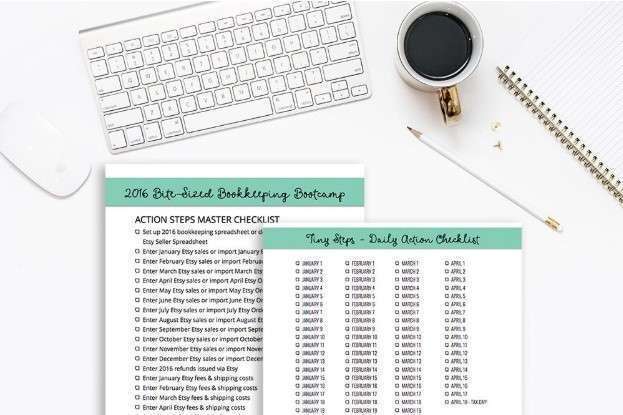
Shareholder equity (SE) is a company’s net worth and it is equal to the total dollar amount that would be returned to the shareholders if the company must be liquidated and all its debts are paid off. Thus, shareholder equity is equal to a company’s total assets minus its total liabilities. What remains after deducting total liabilities from the total assets is the value that shareholders would get if the assets were liquidated and all debts were paid up. The above formula is known as the basic accounting equation, and it is relatively easy to use. Take the sum of all assets in the balance sheet and deduct the value of all liabilities.
Retained Earnings (or Accumulated Deficit)

This calculation provides insights into the net value or worth of the entity. If your business has strong fundamentals and isn’t financing all of its growth with debt, your owner’s equity should be increasing with time. Understanding equity and being able to track its growth is crucial to understanding the long-term financial health of a business. Since equity accounts for total assets and total liabilities, cash and cash equivalents would only represent a small piece of a company’s financial picture.
Private Equity
Once all liabilities are taken care of in the hypothetical liquidation, the residual value, or “book value of equity,” represents the remaining proceeds that could be distributed among shareholders. Get instant access to video lessons taught by experienced investment bankers. Learn financial statement modeling, DCF, M&A, LBO, Comps and Excel shortcuts. The two metrics—equity value and enterprise value—are the two most common methods to measure the valuation of a company. Total Equity (TE) is the value remaining for shareholders after deducting liabilities from assets. It can help you manage bill pay, track vendor payments, and maintain cash flow.
- The debt-to-equity ratio is one of the most important financial ratios that companies use to assess their financial health.
- This shows how well management uses the equity from company investors to earn a profit.
- If it reads positive, the company has enough assets to cover its liabilities.
- A lower D/E ratio suggests the opposite – that the company is using less debt and is funded more by shareholder equity.
Cheaper Than Equity Financing
- In this article, we look at what ROE is, how to calculate it, and how it’s used when analyzing companies.
- Treasury shares or stock (not to be confused with U.S. Treasury bills) represent stock that the company has bought back from existing shareholders.
- Note that ROE is not to be confused with the return on total assets (ROTA).
- Since we’ve calculated the equity value of Tesla (TSLA), we’ll now repeat the process for Ford (F), General Motors (GM), and Stellantis (STLA).
- In an LBO transaction, a company receives a loan from a private equity firm to fund the acquisition of a division of another company.
The retained earnings, net of income from operations and other activities, represent the returns on the shareholder’s equity that are reinvested back into the company instead of distributing it as dividends. The debt-to-equity ratio or D/E ratio is an important metric in finance that measures the financial leverage of a company and evaluates the extent to which it can cover its debt. It is calculated by dividing the total liabilities by the shareholder equity of the company. These metrics include share price, capital gains, real estate value, the company’s total assets and other vital elements of private companies.

What Are Some Examples of Stockholders’ Equity?

A low D/E ratio shows a lower amount of financing by debt from lenders compared to the funding by equity from shareholders. A high D/E ratio suggests that the company is sourcing more of its business operations by borrowing money, which may subject the company to potential risks if debt levels are too high. Calculating equity is essential when propositioning investors for more funding and advising your shareholders. Now you know how to calculate equity for shareholders with two distinct formulas.
ROE is often used to compare a company to its competitors and the overall market. Outstanding shares refers to the amount of stock that had been sold to investors but have not been repurchased by the company. The number of outstanding shares is taken into account when assessing the value of shareholder’s equity. Apart from the balance sheet, businesses also total equity formula maintain a capital account that shows the net amount of equity from the owner/partner’s investments. The value of the owner’s equity is increased when the owner or owners (in the case of a partnership) increase the amount of their capital contribution. Also, higher profits through increased sales or decreased expenses increase the amount of owner’s equity.
Adam Hayes, Ph.D., CFA, is a financial writer with 15+ years Wall Street experience as a derivatives trader. Besides his extensive derivative trading expertise, Adam is an expert in economics and behavioral finance. Adam received his master’s in economics from The New School for Social Research and his Ph.D. from the University of Wisconsin-Madison in sociology.
- For a sole proprietorship or partnership, the value of equity is indicated as the owner’s or the partners’ capital account on the balance sheet.
- Subtract the company’s total liabilities from its total assets to determine its total equity.
- If you total up the value of all the shares you own, that’s your total stock in the company.
- Venture capitalists look to hit big early on and exit investments within five to seven years.

Total assets are the total of current assets, such as marketable securities and prepayments, and long-term assets, such as machinery and fixtures. Total liabilities are obtained by adding current liabilities and long-term liabilities. It also reflects a company’s dividend policy by showing its decision to pay profits earned as dividends to shareholders or reinvest the profits back into the company. On the balance sheet, shareholders’ equity is broken up into three items – common shares, preferred shares, and retained earnings.
Formula and Calculation of Return on Equity (ROE)
On the other hand, liabilities are the total of current liabilities (short-term liabilities) and long-term liabilities. Current liability comprises debts that require repayment within one year, while long-term liabilities are liabilities whose repayment is due beyond one year. The derived amount of total equity can be used by lenders to determine whether there is a sufficient amount of funds invested in a business to offset its debt. It can also be used by investors to see if there is a sufficient amount of equity piled up to press for a dividend. And finally, it can be used by suppliers to see if a business has accumulated a sufficient amount of equity to warrant being extended credit.
Equity is used as capital raised by a company, which is then used to purchase assets, invest in projects, and fund operations. A firm typically can raise capital by issuing debt (in the form of a loan or via bonds) or equity (by selling stock). Investors usually seek out equity investments as it provides a greater opportunity to share in the profits and growth of a firm. The equity of a company is the net difference between a company’s total assets and its total liabilities. A company’s equity, which is also referred to as shareholders’ equity, is used in fundamental analysis to determine its net worth. This equity represents the net value of a company, or the amount of money left over for shareholders if all assets were liquidated and all debts repaid.